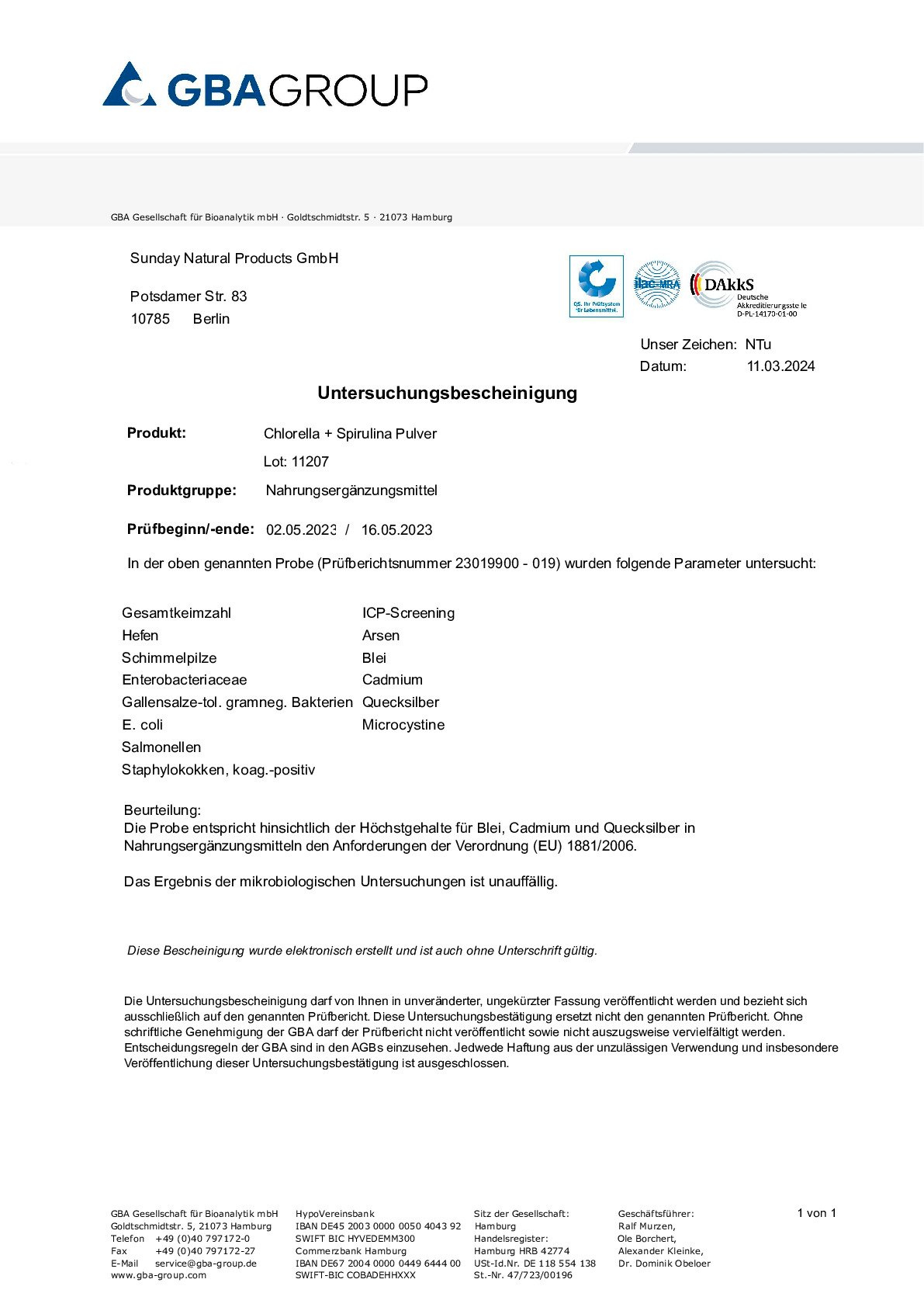Spirulina platensis
Spirulina platensis (Arthrospira platensis) is a cyanobacterium originating in Central and East Africa. Now also widespread in Central America, the algae has been in use for hundreds of years in the cuisine of its countries of origin. It is known for its extraordinary nutrient density; in fact, it even serves as a primary food source for some animals, such as flamingos. Depending on the environment and the water quality, spirulina develops different phenotypes and nutrient densities, and it can multiply rapidly given optimal conditions. While spirulina has been traditionally cultivated in the Pacific, where it benefits from its preferred alkaline and salty water, today it is cultivated worldwide in inland, man-made spirulina farms as well as in freshwater.
Chlorella vulgaris
A type of freshwater microalgae, chlorella is one of the oldest life forms on earth. The unicellular eucaryote, only 5–10μm in size, has a spherical shape and an exceptionally high chlorophyll content. Its particularly strong cell walls contain hemicellulose, which offers the cell stability. Chlorella has an extraordinarily fast reproduction rate, with every cell division taking only 16–20 hours. The chlorella growth factor (CGF) contained in the cell nucleus accounts for this high rate. CGF is a unique complex first isolated in the 1950s by Dr. Fujimaki, consisting of nucleic acids, nutrients, amino acids, peptides and polysaccharides. Chlorella's unique nutrient profile, its high protein content and its valuable secondary phytochemicals make it an interesting superfood.






















